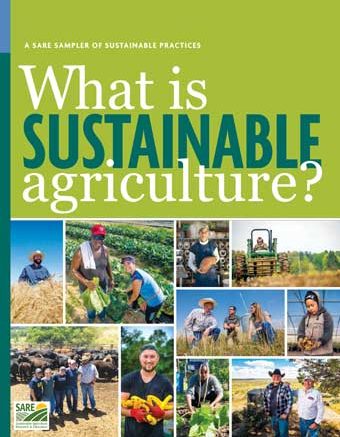|
Click to listen to this article
|
At its heart, sustainable agriculture is simple. In practice, it’s much more complicated. Farmers and ranchers who value sustainability embrace three common goals for a successful production system:
- Profit over the long term
- Stewardship of our nation’s land, air and water
- Quality of life for farmers, ranchers, farm employees and communities
SARE’s newly revised What is Sustainable Agriculture? publication provides a primer to practices that can help farmers and ranchers improve the sustainability of any operation. For example:
- Biological Diversity: Crop rotation and integrated crop and livestock systems are proven approaches for managing water quality, cycling nutrients and interrupting the life cycles of pests.
- Health and Wellbeing of People: Safe and humane working conditions and fair compensation for producers and farmworkers are essential components of a sustainable production system.
- Soil Health: Healthy soil provides a strong foundation for the vitality of any crop or forage. Cover crops, conservation tillage and effective compost and pasture management can help producers improve soil quality.
- Ecological Pest Management: Understanding insect, weed and disease pests can help producers improve control through scouting, reduced applications, biodiversity and other tools.
Available for free in print and online.


